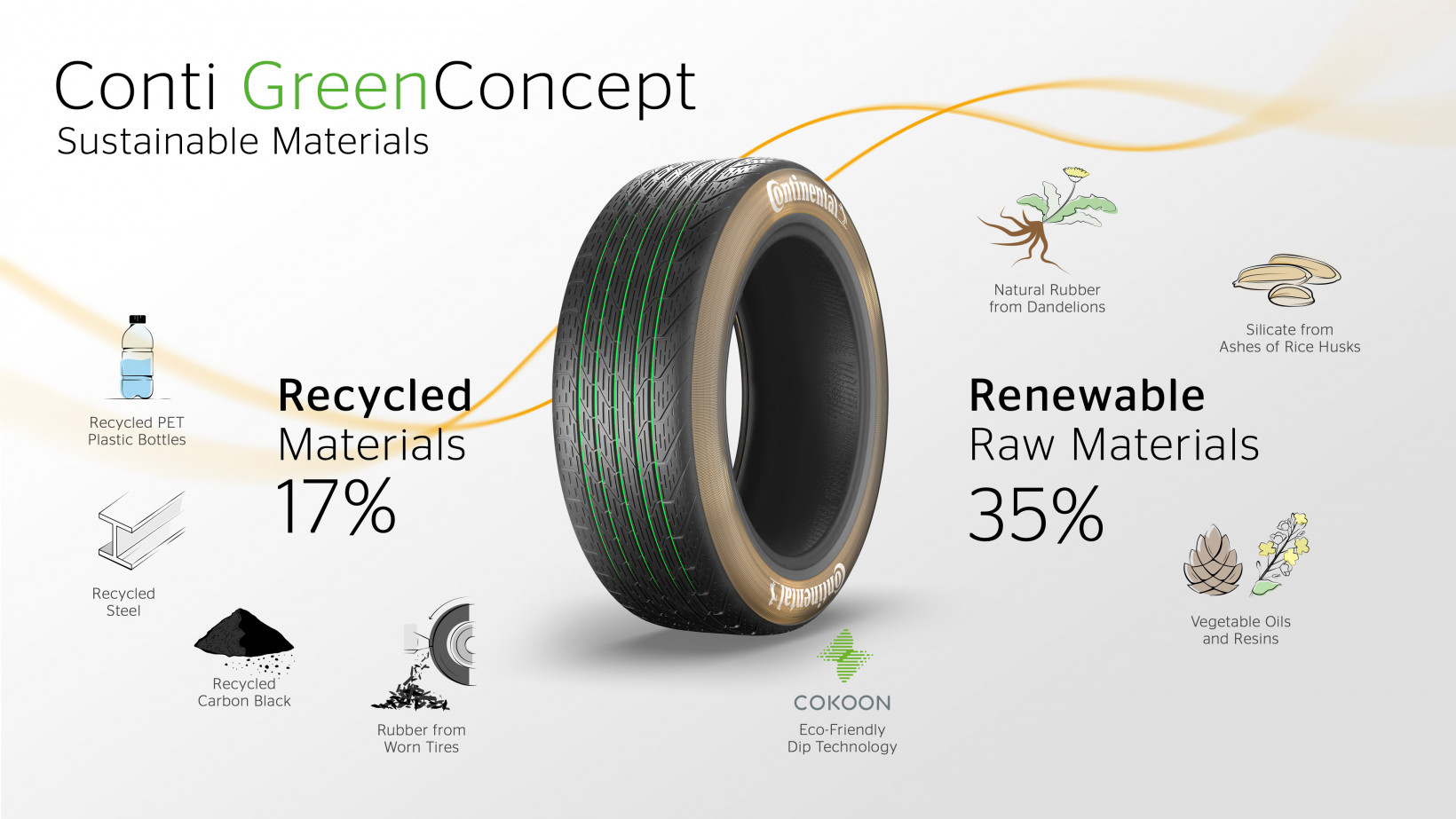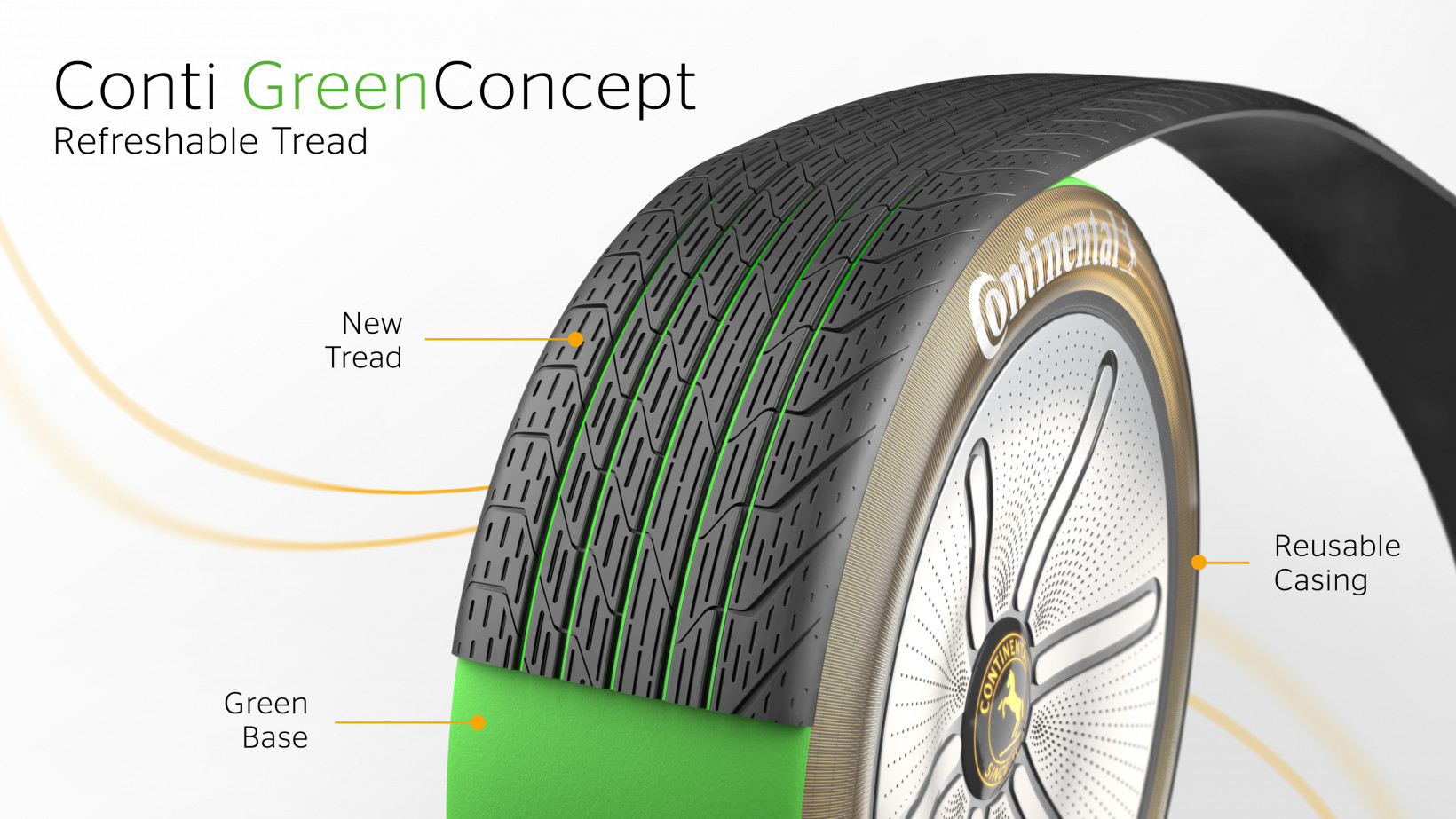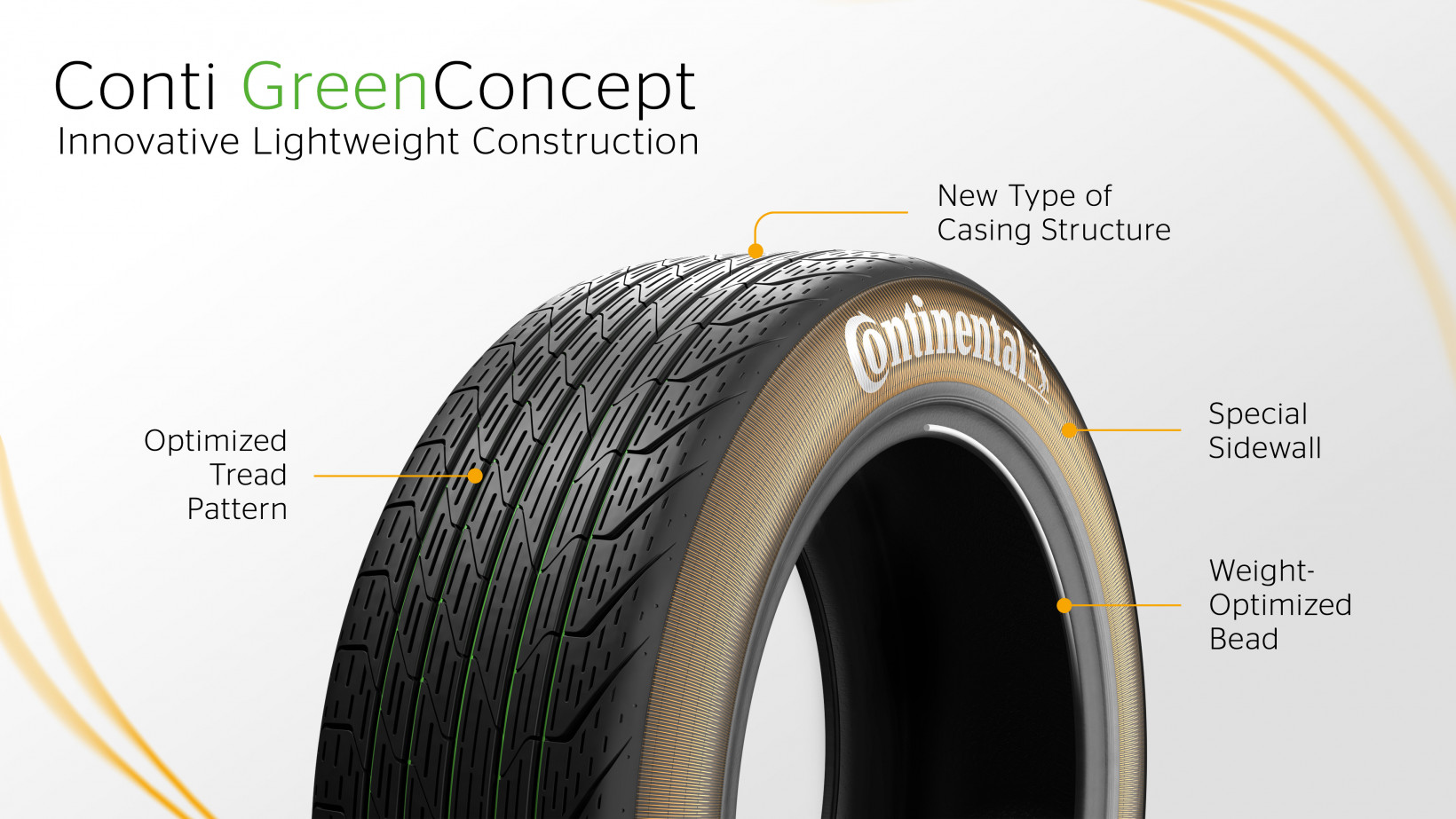Did you know SHIFT is taking the stage this fall? Together with an amazing line-up of experts, we will explore the future of mobility during TNW Conference 2021. Secure your ticket now!
Out of the many promising initiatives that got unveiled at the 2021 IAA Mobility Show in Munich, Continental‘s Green Concept is definitely one worth looking into.
The German company announced that it’s working on a tire made from renewable, recycled, and traceable materials, designed to have extended service life and increased sustainability over its entire value chain.
What it’s made of
For starters, the Conti GreenConcept consists of 35% renewable bio-materials. These include natural rubber from dandelions, silicate from the ash of rice husks, and vegetable oils and resins. This reduces the need for crude oil, traditionally found in tires.
It’s also composed from 17% recycled materials, namely reclaimed steel, recovered carbon black, and polyester yarn. Notably, the polyester comes from recycled plastic PTE (polyethylene terephthalate) bottles, which according to Continental is an industry first.
The technology is called ContiRe.Tex and entails a recycling process that “does without the usual intermediate chemical processing steps, and the resulting polyester yarn is then made functionally capable of handling the high mechanical forces to which tires are subjected.”
Based on the company’s estimation, each of the tires of a conventional passenger vehicle includes roughly 400 grams of polyester yarn. This means that for a set of four tires a total of over 60 recycled PET bottles can be reused instead of being discarded.


And here’s another plus: the natural rubber used for the Conti GreenConcept tread compound can be retreaded multiple times.
To facilitate the process, there is an inner green layer between the tread and casing which is clearly marked to indicate the replaceable portion of the tire.
Undamaged casings can be reused several times, which means that the valuable raw materials that are built into them can be refurbished, reducing both cost and material usage.


Lighter and with lower rolling resistance
The use of green materials makes the tires lighter, weighing just 7.5kg. Continental attributes this to “a special sidewall and a new casing design” as well.


In turn, the tire’s lightweight design lowers its rolling resistance, which cuts down on energy consumption and, thus, environmental impact.
In practice, low rolling resistance is good news for both gas guzzlers and EVs. In the first case, internal combustion vehicles get greater mileage and lower carbon emissions, while electric ones get — as you might have guessed — longer range.
Specifically, Continental has calculated a 25% reduction in rolling resistance, which translates into a 6% greater range for EVs.
Overall, the company has destined its sustainable product for next-gen smart vehicles, featuring sensors and resource-saving drives. Such vehicles enable anticipatory driving, which allows for the development of increasingly lightweight and resource-friendly tires.
Admittedly, this a bold and very promising concept that point towards significant sustainability improvements in a vehicle’s supply and production chain. It’s also part of Continental’s wider aim to achieve full climate neutrality by 2050.
Do EVs excite your electrons? Do ebikes get your wheels spinning? Do self-driving cars get you all charged up?
Then you need the weekly SHIFT newsletter in your life. Click here to sign up.